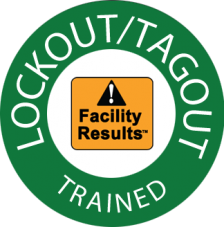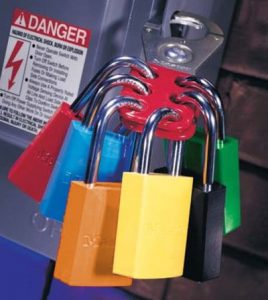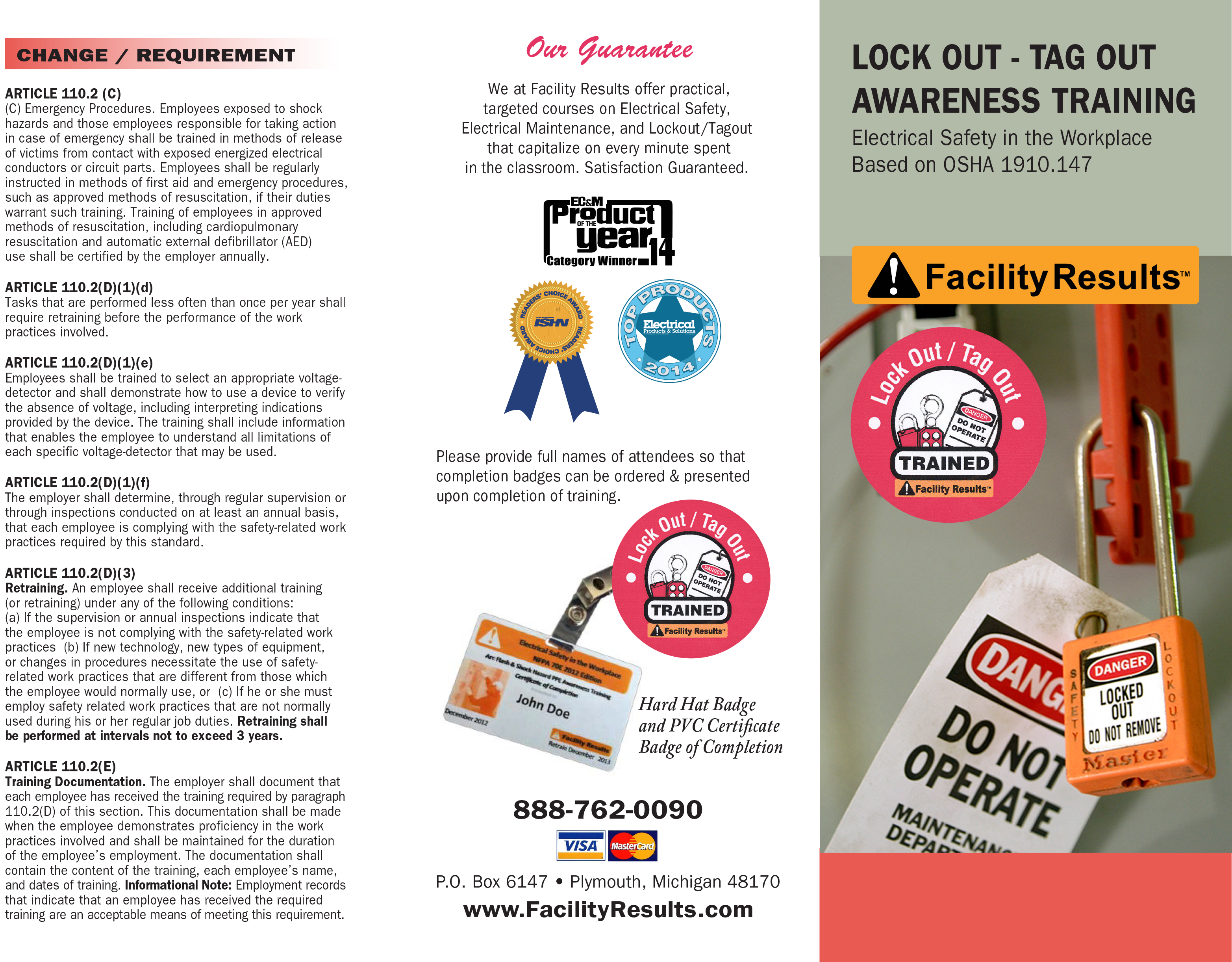Lockout/Tagout Training (OSHA 1910.147)
Who should attend this Lockout/Tagout (LOTO) training?
Suggested attendees for Lockout/Tagout (LOTO) (OSHA 1910.147) Training include authorized personnel who service equipment that has been locked or tagged as well as any affected person who may be operating such equipment or who may work in close proximity to the live electrical equipment bearing the locks and tags.




Overview:
The Facility Results’ Lockout/Tagout (LOTO) (OSHA 1910.147) training course is an on-site training course designed to inform attendees of the potential dangers of stored energy and instruct on best practices for eliminating potential hazards resulting from improperly locked/tagged devices or a lack of understanding on the part of those who work with or close to locked/tagged equipment.

What does Loto stand for electrical?
Loto stands for Lock Out / Tag Out, which is a vital safety procedure used to protect workers from electrical hazards when servicing or repairing electrical appliances or machinery. The purpose of Loto is to prevent the accidental start-up or release of stored energy that could cause injury or death to workers.
Lockout / Tag out involves isolating the energy source by locking and tagging the electrical appliance or machinery before servicing or repair. The lockout ensures that the machinery or appliance is not started accidentally while the tag out warns other workers that the appliance is undergoing maintenance or repair and should not be operated until the lockout has been removed.
The lockout tag-out procedure is essential for workplaces where machinery and electrical appliances are used regularly. The procedure outlines the necessary steps that must be taken to ensure the safe isolation of energy sources before servicing or repair. Lockout tag-out kits are available that provide all the necessary equipment required for the procedure, including padlocks, tags, and isolation devices. These kits help to make the lockout tag-out process more efficient and reduce the risk of accidents and injuries.
Lock Out Tag Out training is also important for all workers who operate or service machinery and electrical appliances. It teaches workers how to identify energy sources, isolate them correctly, and carry the lockout tag-out procedure safely. Training is usually provided by qualified trainers who are experienced in Loto procedures and can ensure that workers are fully aware of the hazards and risks associated with servicing or repairing machinery and electrical appliances. Loto is a crucial safety procedure that must be implemented in workplaces that use machinery and electrical appliances. Lockout / Tag out helps to protect workers from electrical hazards and reduce the risk of accidents and injuries. Lock-out tag-out procedures, kits, and training are essential components of a safe workplace and must be followed rigorously.
 Identifying energy sources, including primary, secondary, and stored
Identifying energy sources, including primary, secondary, and stored
 Understanding the company’s written lockout (LOTO) program
Understanding the company’s written lockout (LOTO) program
 Pros and Cons of locks vs. tags
Pros and Cons of locks vs. tags
 Identifying different lockout devices and how to apply them
Identifying different lockout devices and how to apply them
 Understanding the impact of locks/tags on affected employees vs. authorized employees
Understanding the impact of locks/tags on affected employees vs. authorized employees
 Identifying and following necessary start-up and shut-down procedures
Identifying and following necessary start-up and shut-down procedures
 Implementing a group lockout Tagout (LOTO)
Implementing a group lockout Tagout (LOTO)
 Communicating across shifts
Communicating across shifts
 Performing scheduled audits of affected energy points
Performing scheduled audits of affected energy points
 Implementing a program with third-party contractors
Implementing a program with third-party contractors
Force section down
What must employers do to protect employees?
The standards establish requirements that employers must follow when employees are exposed to Hazardous Energy while Servicing and maintaining equipment and machinery. Some of the most critical requirements from these standards are outlined below:
- Develop, implement, and enforce an energy control program.
- Use lockout devices for equipment that can be locked out. Tagout devices may be used in lieu of lockout devices only if the tagout program provides employee protection equivalent to that provided through a lockout program.
- Ensure that new or overhauled equipment is capable of being locked out.
- Develop, implement, and enforce an effective tagout program if machines or equipment are not capable of being locked out.
- Develop, document, implement, and enforce energy control procedures. [See the note to 29 CFR 1910.147(c)(4)(i) for an exception to the documentation requirements.]
- Use only lockout/tagout devices authorized for the particular equipment or machinery and ensure that they are durable, standardized, and substantial.
- Ensure that lockout/tagout devices identify the individual users.
- Establish a policy that permits only the employee who applied a lockout/tagout device to remove it. [See 29 CFR 1910.147(e)(3) for exception.]
- Inspect energy control procedures at least annually.
- Provide effective training as mandated for all employees covered by the standard.
- Comply with the additional energy control provisions in OSHA standards when machines or equipment must be tested or repositioned, when outside contractors work at the site, in group lockout situations, and during shift or personnel changes.
Source: www.osha.gov
What is LOTO?
LOTO stands for “Lockout/Tagout.” It is a safety procedure used in industry and construction to ensure that dangerous machines are properly shut off and cannot be operated before maintenance or repair work is performed. It involves using locks and tags to physically prevent the machine from being started or activated while work is done on it. The goal of LOTO is to prevent accidents such as machine start-ups, the release of stored energy, or the unintended movement of mechanical parts that can cause serious injury or death to workers.
We will travel to your site.
New York, NY, Los Angeles, CA, Chicago, IL, Brooklyn, NY, Queens, NY, Houston, TX, Manhattan, NY, Philadelphia, PA, Phoenix, AZ, San Antonio, TX, Bronx, NY, San Diego, CA, Dallas, TX, San Jose, CA, East San Gabriel Valley, CA, Austin, TX, Jacksonville, FL, San Francisco, CA, Indianapolis, IN, Columbus, OH, Toledo, OH, Fort Worth, TX, Charlotte, NC, Detroit, MI, El Paso, TX, Seattle, WA, Denver, CO, Washington, DC, Memphis, TN, Boston, MA, Nashville, TN, Baltimore, MD, Murfreeboro, TN, Oklahoma City, OK, Portland, OR, Las Vegas, NV, Milwaukee, WI, Albuquerque, NM, Tucson, AZ, Fresno, CA, East Seattle, WA, Central Contra Costa, CA, Sacramento, CA, Staten Island, NY, Long Beach, CA, Northeast Tarrant, TX, Kansas City, MO, Mesa, AZ, Northwest Harris, TX, Atlanta, GA, Northeast Jefferson, CO, Virginia Beach, VA, Omaha, NE, Colorado Springs, CO, Raleigh, NC, Miami, FL, Oakland, CA, Minneapolis, MN, Tulsa, OK, Holland, OH, Grand Rapids, MI, Ann Arbor, MI, Battle Creek, MI, Flint, MI, Fenton, MI, Brighton, MI, Howell, MI, West, Michigan, West, MI, NE, Ohio, Northeast, OH, Northwest, OH, NW, Ohio
Alabama, Alaska, Arizona, Arkansas, California, Colorado, Connecticut, Delaware, Florida, Georgia, Hawaii, Idaho, Illinois, Indiana, Iowa, Kansas, Kentucky, Louisiana, Maine, Maryland, Massachusetts, Michigan, Minnesota, Mississippi, Missouri, Montana, Nebraska, Nevada, New Hampshire, New Jersey, New Mexico, New York, North Dakota, Ohio, Oklahoma, Oregon, Pennsylvania, Rhode Island, South Dakota, Tennessee, Texas, Utah, Vermont, Virginia, Washington, West Virginia, Wisconsin, Wyoming
LOTO stands for “Lockout/Tagout”. It is a safety procedure used in the workplace to ensure that machines or equipment are properly shut off and disconnected from their energy sources before maintenance or repair work is performed on them. This is done to prevent injuries to workers from unexpected start-ups or the release of stored energy in the machines or equipment.
The LOTO procedure involves using locks and tags to physically block access to the energy source, such as a circuit breaker or valve, and to visually indicate that the machine or equipment is not to be operated. The worker who is performing the maintenance or repair work is the one who applies the lock and tag, and they are the only one who has the key or combination to remove it. This ensures that only authorized personnel can access the energy source and that the work can be done safely.
There are several key elements to a LOTO program, including:
- Energy control procedures: These outline the steps workers must follow when performing maintenance or repair work on machines or equipment. The procedures should specify who is responsible for applying the lock and tag, how the lock and tag should be applied, and what precautions should be taken to ensure the worker’s safety.
- Training: Workers should be trained on the LOTO procedures and the hazards associated with the machines or equipment they will be working on. They should also be trained to identify the energy sources and disconnect and block them safely.
- Locks and tags: Locks and tags should be durable and easy to identify. They should be clearly labeled with the name of the worker who applied and the date they applied.
- Inspection: Locks and tags should be regularly inspected to ensure they are in good condition and are being used correctly.
LOTO is a crucial safety measure that helps prevent injuries and fatalities in the workplace. All workers must follow the LOTO procedures and use the appropriate locks and tags when performing maintenance or repair work on machines or equipment.
